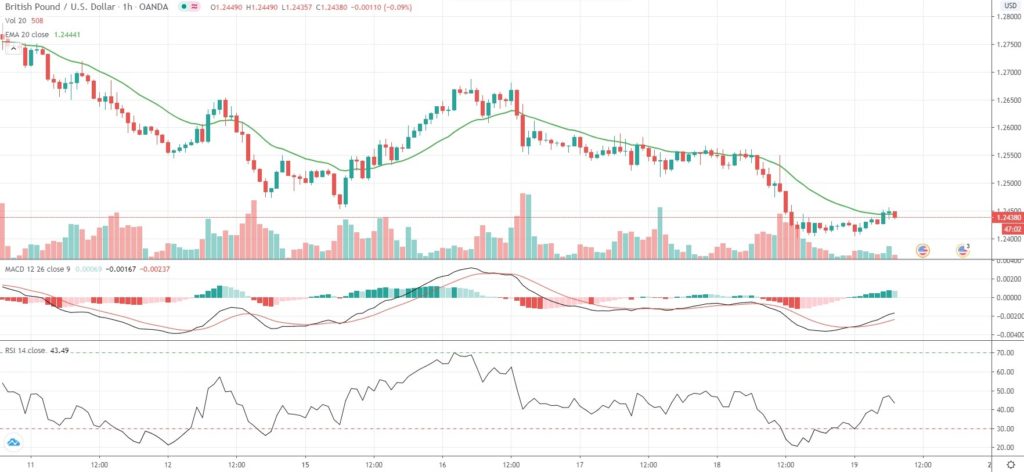GBP/USD plummeted to lows unseen since June 1st on Thursday, following Bank of England’s decision to bolster its bond-purchasing programme by £100 billion, in line with market expectations. The major pair managed to recoup a small part of that loss during Friday’s Asian session, but it was still set to register a second straight week of decline.
After an unanimous vote at the policy meeting yesterday, Bank of England left its key bank rate at a record low level of 0.1%, as largely expected. Members of the bank’s Monetary Policy Committee also voted by a majority of 8-1 to increase the target stock of government bond purchases to a total of £745 billion, with that target expected to be reached by the end of 2020.
Policy makers now expect a less steep contraction in UK’s Gross Domestic Product during the second quarter compared with a prior forecast. However, they warned that the outlook remained unusually uncertain and economic recovery might take some time.
Sterling received certain support in early European trade on Friday after UK’s Office for National Statistics reported a record monthly increase in retail sales in May. Sales surged 12.0% last month, exceeding a consensus of estimates, after a record drop of 18.0% in April. Year-on-year, retail sales went down 13.1% in May, or at a slower rate than anticipated.
Still however, risks such as Brexit uncertainty remain an obstruction for the British currency.
“Uncertainty around a UK-EU trade deal should prevent markets from pricing out the possibility of negative rates in the UK,” ING analysts wrote in an investor note.
“We expect little progress in UK-EU trade negotiations in the weeks to come, suggesting further downside to the pound and the currency to be one of the underperformers in the G10 FX space.”
As of 7:05 GMT on Friday GBP/USD was edging up 0.19% to trade at 1.2445, after touching an intraday low of 1.2405 in early Asian session, or a level close to Thursday’s 2 1/2-week low. The major pair has retreated 0.78% so far this week, following a 1.01% drop in the business week ended on June 12th.
In terms of economic calendar, a report by the US Bureau of Economic Analysis may show the deficit on the country’s current account narrowed to $103 billion during the first quarter of 2020, according to market expectations, from $109.8 billion in Q4 2019. The fourth-quarter deficit was equivalent to 2.0% of US Gross Domestic Product, or a decrease from 2.3% in Q3. The official data will be released at 12:30 GMT.
At 14:15 GMT Boston Federal Reserve Bank President Eric Rosengren is scheduled to speak at the Greater Providence Chamber of Commerce on the US economy and current financial environment.
Additionally, at 16:00 GMT Fed’s Vice Chairman for Supervision Randal Quarles is expected to participate in a WHF Public Policy Event via a webcast. The topic will be announced at the start of his remarks.
And at 17:00 GMT Fed Chair Jerome Powell is scheduled to speak during the Federal Reserve Bank of Cleveland virtual discussion on building a resilient workforce during the COVID-19 era.
Bond Yield Spread
The spread between 2-year US and 2-year UK bond yields, which reflects the flow of funds in a short term, equaled 23.9 basis points (0.239%) as of 6:15 GMT on Friday, down from 24.1 basis points on June 18th.
Daily Pivot Levels (traditional method of calculation)
Central Pivot – 1.2464
R1 – 1.2526
R2 – 1.2629
R3 – 1.2691
R4 – 1.2753
S1 – 1.2360
S2 – 1.2299
S3 – 1.2195
S4 – 1.2092






